I’m on a quest to catch a fish in each of the 50 U.S. states – and to use each adventure as a means to explore conservation, the latest fisheries research and our complicated connections to the natural world.
I love many forms of fishing, but for me, the greatest joy involves stalking native fishes in small streams. Splashy rises for dry flies, clear pools and small waterfalls, and solitude: these are the ingredients for my perfect day.
So it seems inevitable I’d find redeye bass, the native black bass typically found in small streams of the Southeast. These fish will smash a popper twitched on the surface. They’re found in beautiful little waters. I’d already pursued two of the seven species, Bartram’s bass in South Carolina and Altamaha bass in Georgia.
Today I’m in the heart of redeye country in Alabama after another species, the Coosa bass. Showing me the way is Matt Lewis, a biologist, angler and author who has brought attention to these fishes that were previously ignored. Since he published his book, Fly Fishing for Redeye Bass, a growing subculture has risen around redeyes.
For a small-stream angler like me, it’s not difficult to understand why.
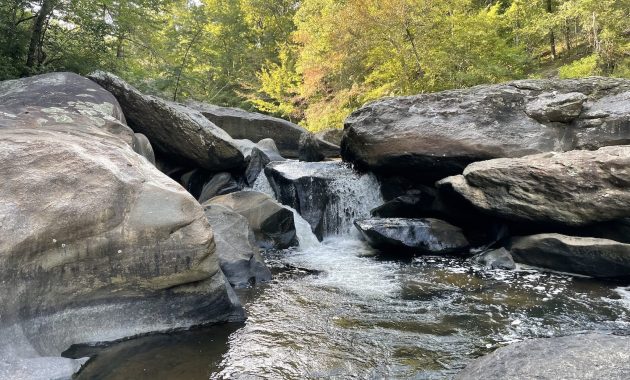
I meet Lewis in a somewhat crowded state park, but we quickly move to a secluded stream, one of those little blue lines on the map. I had fished with Lewis the previous year for my own favorite native fish, the cutthroat trout, in Idaho. We hit it off quickly, as he shared a love of the aesthetics of the outdoor experience, of native fishes and conservation.
We park at the small stream and walked down a rocky bank by the bridge, where a deep little hole formed below some riffles. “There could be a bass right there,” Lewis says.
I make one indelicate and sloppy cast, pull my line back and let out another one. This time the popper – a foam fly that floats on the surface and creates ripples when you retrieve it – landed against the far bank.
The popper barely touched the water when it disappeared into a little whirlpool. I lifted my rod and was tight to my first Coosa bass, and third species of redeye. My 3-weight rod bent as I pulled in the fish.
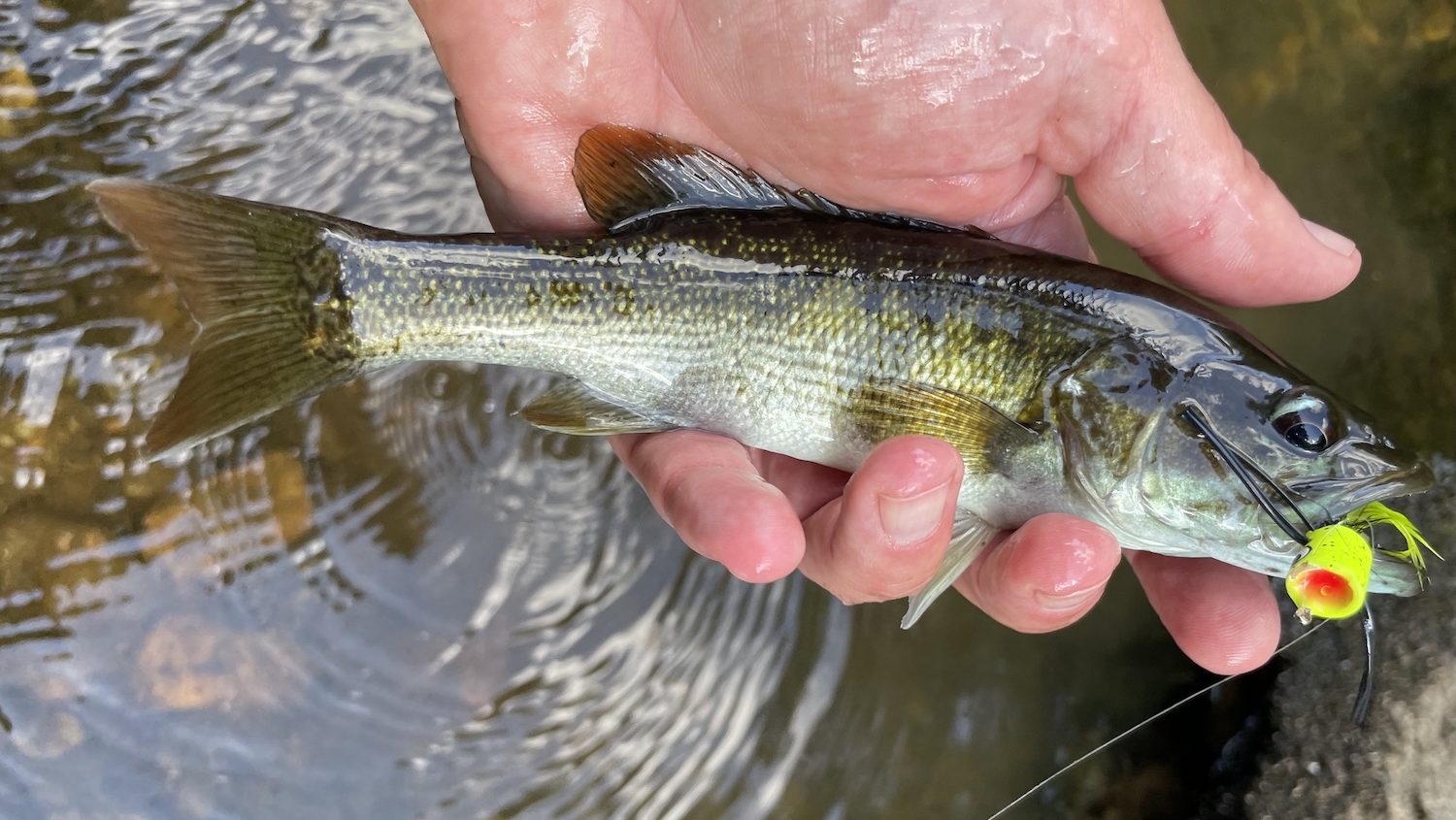
Redeye bass can reach a foot or more, but most in small streams are 6-10 inches. They would not be confused with a trophy largemouth you see hoisted in a tournament.
But what they lack in size, they make up in beauty, fight and character. And then there are the places you find them.
We continue up the stream a bit, slipping on round rock that lines the stream. I cast into another pool and am quickly tight to another fish. This time it’s another fish I hoped to catch, the shadow bass. In the genus Ambloplites, the shadow bass resembles another species well known to anglers in the East and Midwest, the rock bass.
A few casts later and I’ve caught a third species, a longear sunfish, a common species here and known for its beautiful colors.
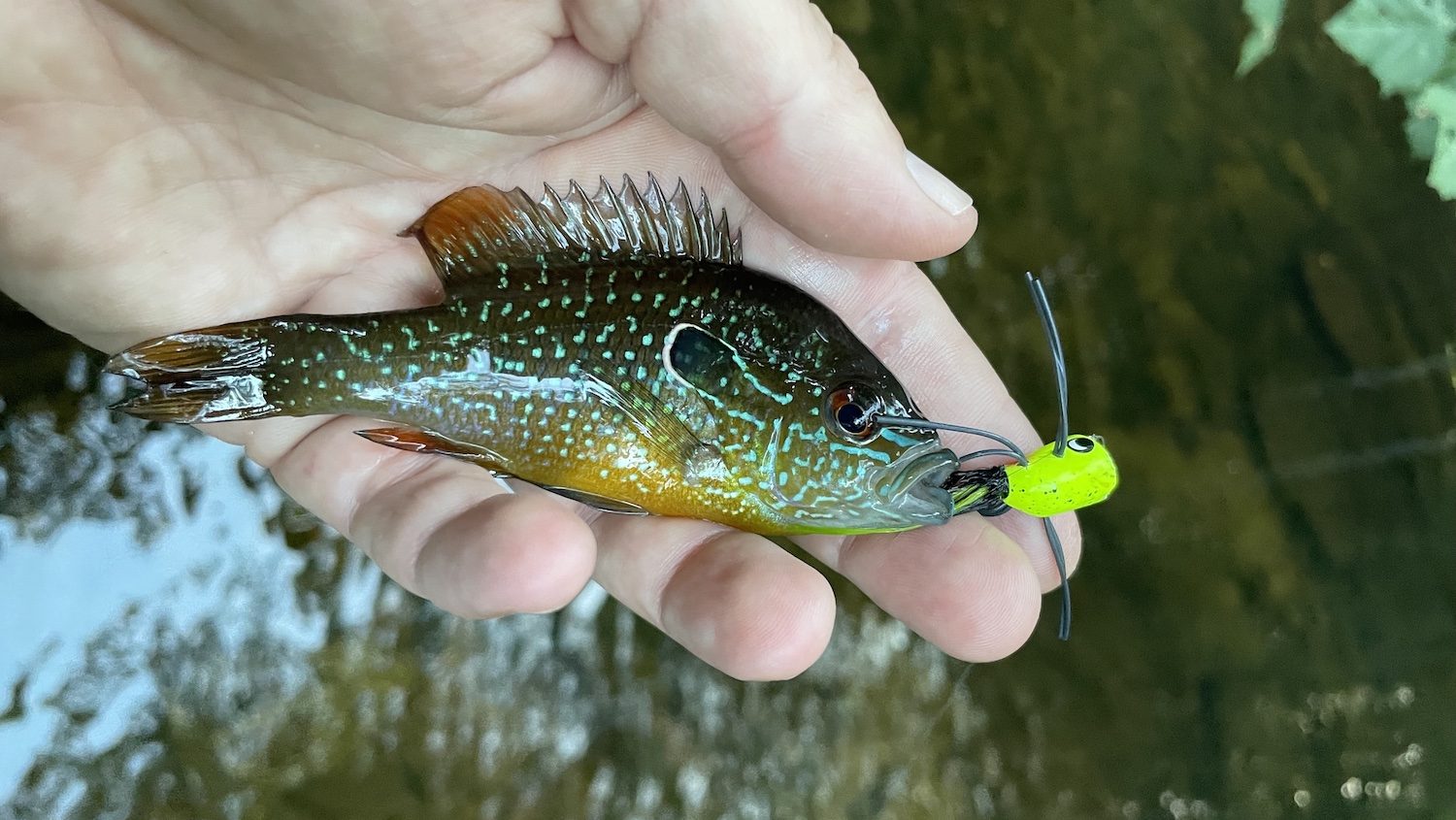
In about 15 minutes of fishing I’ve caught 3 species, but that’s just a little hint of a deeper truth: the streams in the Mobile Basin of Alabama are among the most biodiverse in the United States.
At times, freshwater fish conservation can be portrayed by anglers as being solely about the health of trout streams. And nothing against those streams, but they lack the stunning diversity found throughout the Southeast. Just looking around, I see a turtle swim by as well as colorful darters and a host of other small fishes. There are freshwater mussels in an array of sizes, colors and shell patterns.
And there are redeye bass, until recently largely unknown, unstudied and ignored by anglers. Matt Lewis hopes to change that.
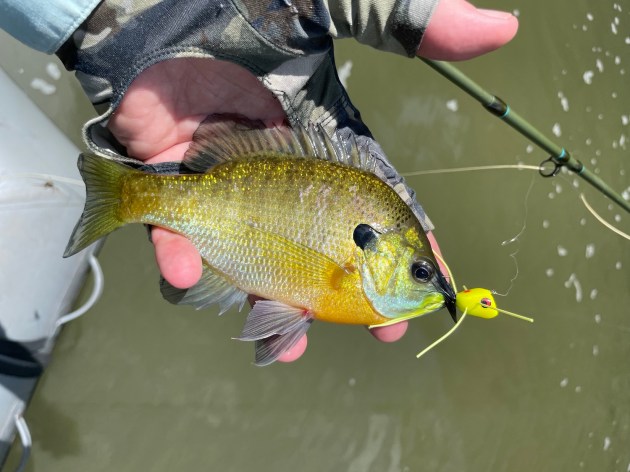
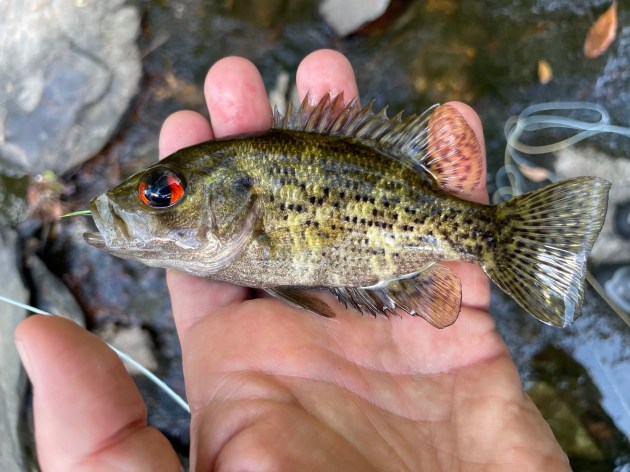
Doctor Redeye
When Matt Lewis started fly fishing, he loved the activity but was not so much into the “scene” one finds around casting to non-native trout at popular tailwaters.
“I was captivated by brook trout in the backcountry,” he says. “When I go fishing, I don’t like being around crowds.”
An acquaintance suggested he try redeye bass, fish that – like brook trout – are often found in small backcountry streams. Plus, they were closer to his Alabama home.
“The first time I caught one, it was over for me,” Lewis says. “They are aggressive, pretty and just seem built for topwater fly anglers.”
He became completely engrossed with fly fishing for the 7 varieties of redeye bass. When he decided to write a book on the topic, he started researching them. And found gaps of missing information. Lots of gaps.
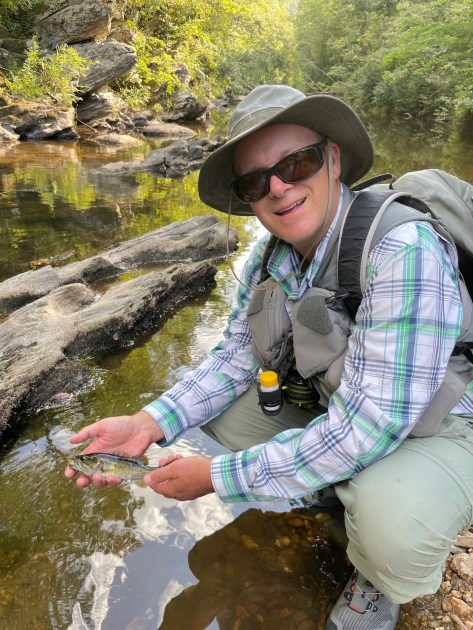
“There was so little about redeye bass in the scientific literature or in outdoor magazines,” he says. “As I looked into what we knew about them, I found so many dead ends.”
But he became aware of an alarming fact: redeye bass were in trouble. One of the big threats was hybridization from Alabama bass. Historically, streams were stocked with this larger fish species, that then outcompeted and hybridized the redeyes. But that stocking continued with illegal “bucket releases” by anglers wanting to expand the range of Alabama bass.
At the time, Lewis had been working in human genetics for 10 years. He saw there was a conservation need for genetics research with redeye bass.
“I found this fish that I’m super passionate about and I have a skill set in genetics,” he says. “I saw an opportunity to combine my professional and personal interests.”
Now many friends and associates call him “Dr. Redeye” and he’s spreading the word about his favorite fish, on social media and fishing podcasts and at scientific conferences.
“I want people to know about these fish, care about them and want to protect them,” he says.
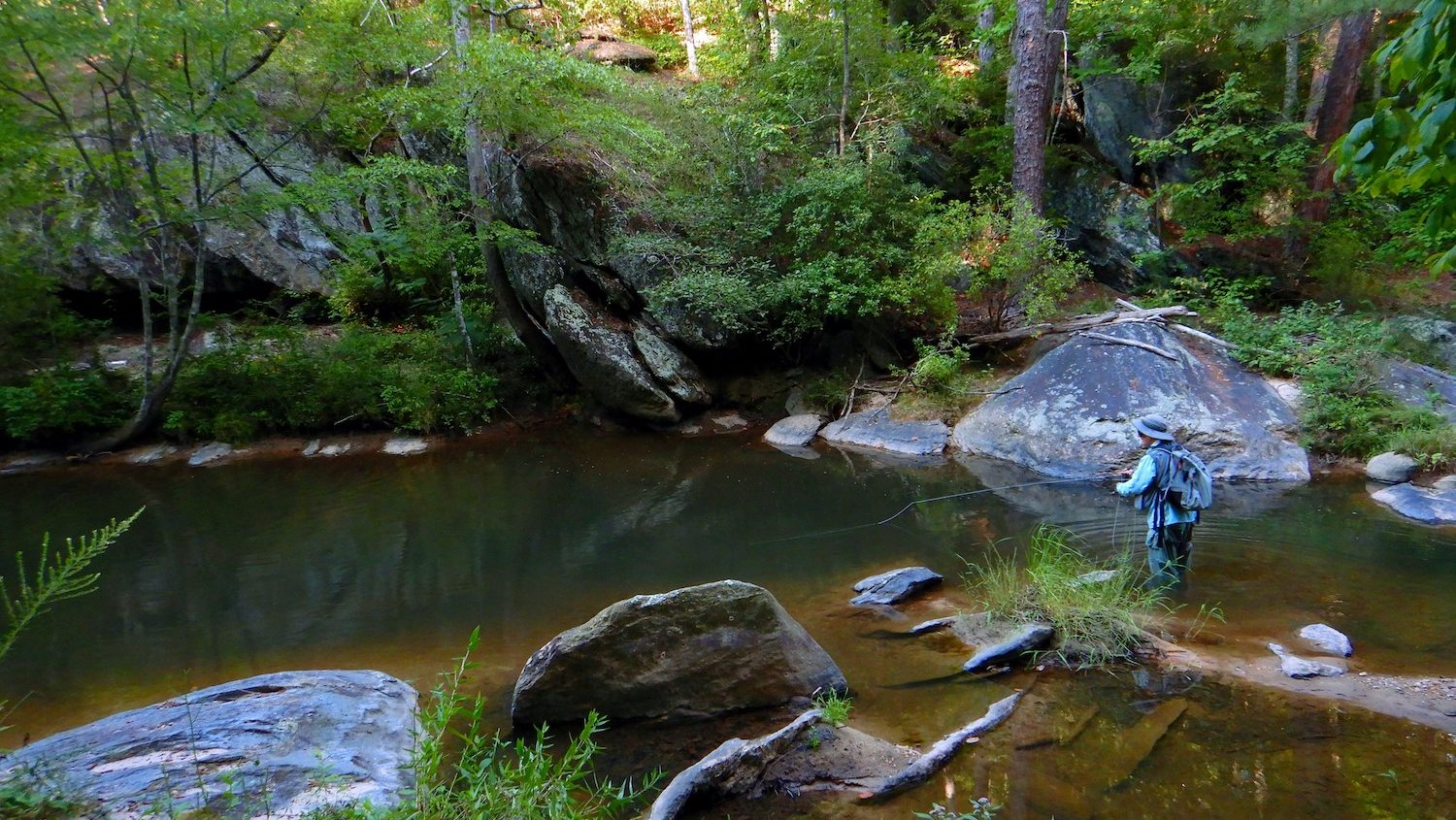
Threats to Native Bass
Redeye bass face many of the threats impacting freshwater biodiversity everywhere, including impacts to headwater streams, development, sedimentation and pollution.
And they also do face significant threats from Alabama bass. “In populations where Alabama bass have been introduced, we find very few genetically pure populations of redeye bass left,” says Lewis.
Interestingly, there are streams that naturally have both redeye bass and Alabama bass. And in those streams, rates of hybridization are much lower.
Lewis’s research modeled hybridization trends and the role stream disturbance plays in increasing hybridization. He also sampled many populations, and often the findings could be bleak. A couple of redeye bass species – the Warrior and Cahaba basses – have few pure populations left.
The remaining pure redeye bass populations face continued threats from illegal stocking. As such, recreational anglers are a threat to native fishes. But could they also be the main hope?

A Day on the Tallapoosa
After our successful evening outing for Coosa bass, Lewis proposed a float trip for another redeye species the next day. Each of the 7 redeyes are found in different drainages in the southeast U.S.
The float outing would be for Tallapoosa bass. Unlike many redeyes, the Tallapoosa can still be found in a larger river system. Here, they coexist with Alabama bass (native to the system).
Rowell Guevarra, a fishing guide with East Alabama Fly Fishing, had a day off and had offered to take us down the Tallapoosa River through Horseshoe Bend National Historic Park.
As we floated Guevarra shared the history of this place, where in 1814, Andrew Jackson’s forces fought the Red Stick Creek warriors. The Red Stick Creek horrifically lost 800 fighters, leading to the Creeks ceding 26 million acres to the United States. They were later forcibly removed to Oklahoma, part of the Trail of Tears.
A Filipino born in Los Angeles, Guevarra grew up with a passion for spear fishing. A career in the Army brought him to fly fishing. Now retired after a military career, he has a passion for sharing his love of fly fishing including through Project Healing Waters, which assists disabled military veterans.
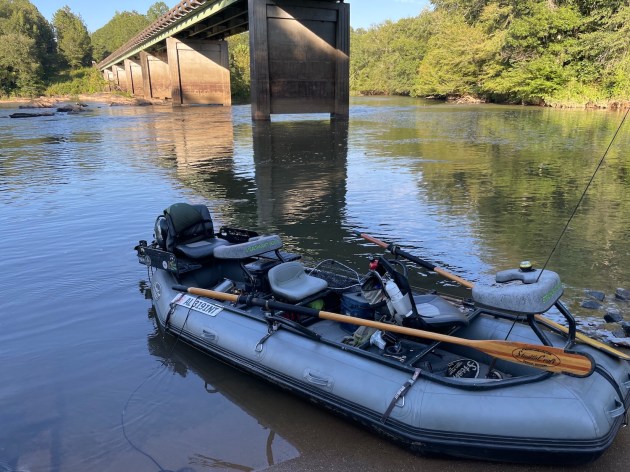
Guevarra also has a clear love of the river, its history and the redeye bass, even though in the morning the fish were slow to show. It was starting to look like one of those “you should have been here yesterday” situations familiar to anyone who fishes much. The previous afternoon, Guevarra’s clients had caught more than 30 fish on the same stretch of water.
Casting hard to the bank as we floated the large water, my popper disappeared. I missed the hit. But a few minutes later, I was tight to my first Tallapoosa bass, a beautiful little fish caught in waters surrounded by beauty and tragic history.
Guevarra slapped me on the back. “You can’t catch one of these just anywhere,” he says. “It’s a special experience here, everything about it.”
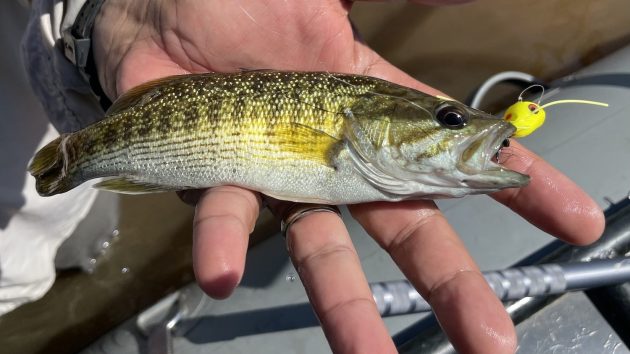
And that’s one of the things that draws me to the 7 species of redeye bass. There’s much gushing prose written about brown trout. But you can catch a brown trout in Idaho and Pennsylvania and Patagonia and Ethiopia. It’s native to none of those places. You can catch one just about anywhere.
You can catch a Tallapoosa bass in the Tallapoosa drainage of Alabama. That’s it. This beautiful fish is of this place and only this place. Guevarra and Lewis get this.
TNC at work in the Delta
Protecting the Land Between the Rivers
And in no small part due to the efforts of redeye enthusiasts like them, other anglers see what is special. Most conservationist don’t know about these fish, so it’s up to anglers to be a voice for them.
“A lot of anglers value a wild experience with native fish,” Lewis says. “They value the overall outdoor experience.”
When Lewis began writing and speaking about these fish, he was surprised at the high level of enthusiasm. While stocking of non-native Alabama bass remains an issue, he’s also hopeful of the community that’s formed around these aggressive native fish of the Southeast backcountry.
“I see fishing for redeye bass as a way to connect anglers to native fish conservation,” he says. “And I see these bass as a way to talk about larger watershed-level conservation issues. I think many anglers get that. They want healthy waters and native fish.”
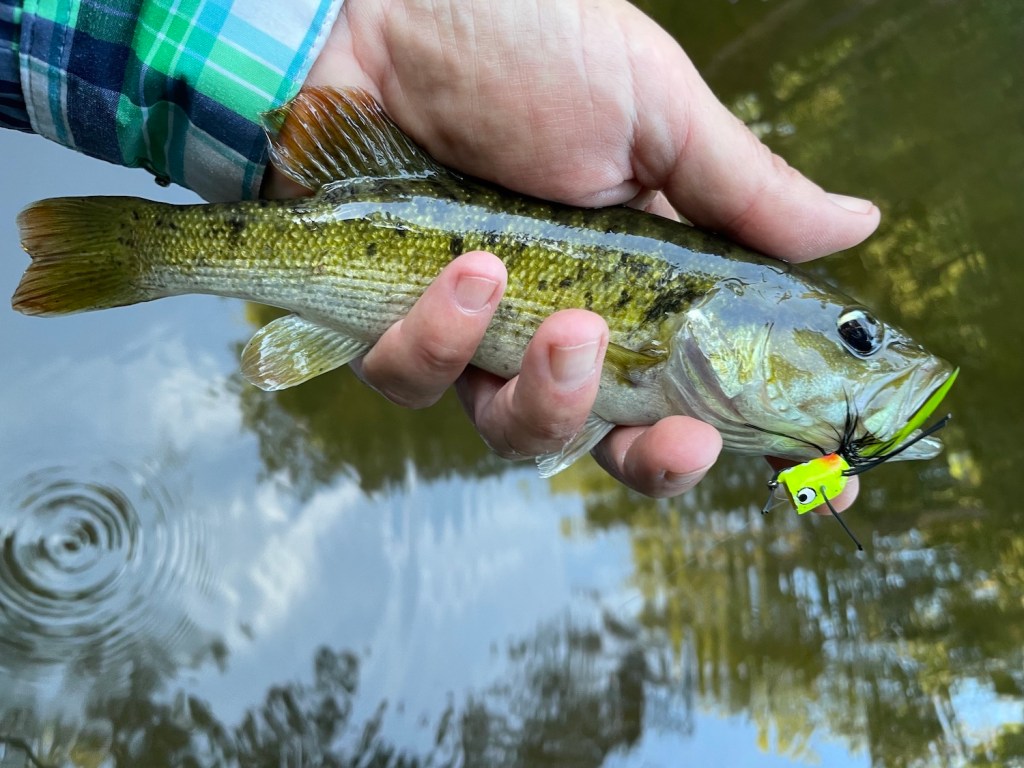



Another great article Matthew. Thanks for writing about our native fish. I grew up bass fishing, been chasing stream smallies all my life, am well into my Cutthroat “slam” and consider myself a well educated angler. But until I read the other Matthew’s book, I knew nothing of redeyes.
Since then I’ve been fortunate enough to find 5 of the 7 species. Two more to go! More than that though I’ve discovered the beauty of these SE streams that before I never gave a moment’s thought. Thanks again!
Another cool adventure with the Redeye … great points on how a passion for fishing for a native fish can inspire conservation of the habitat critical to the fish and we humans.